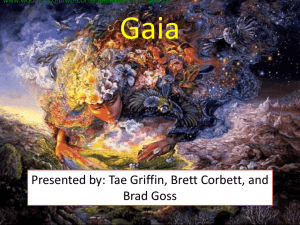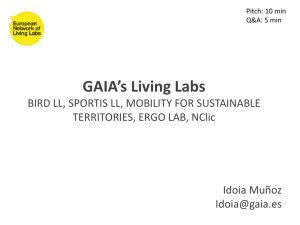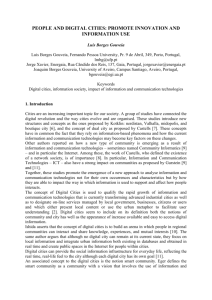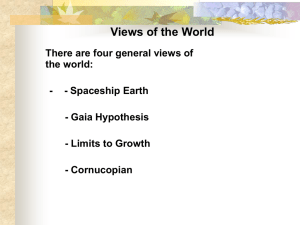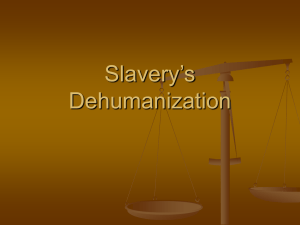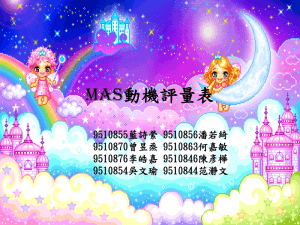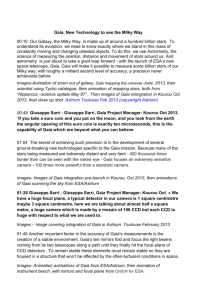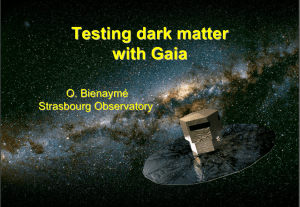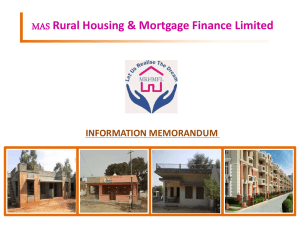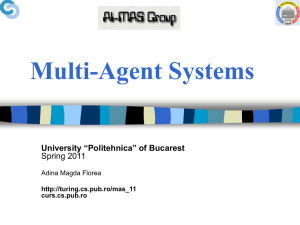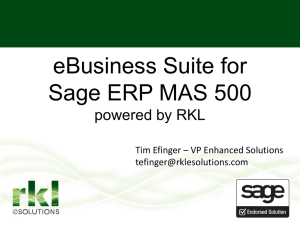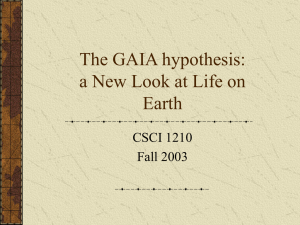Developing MAS
advertisement
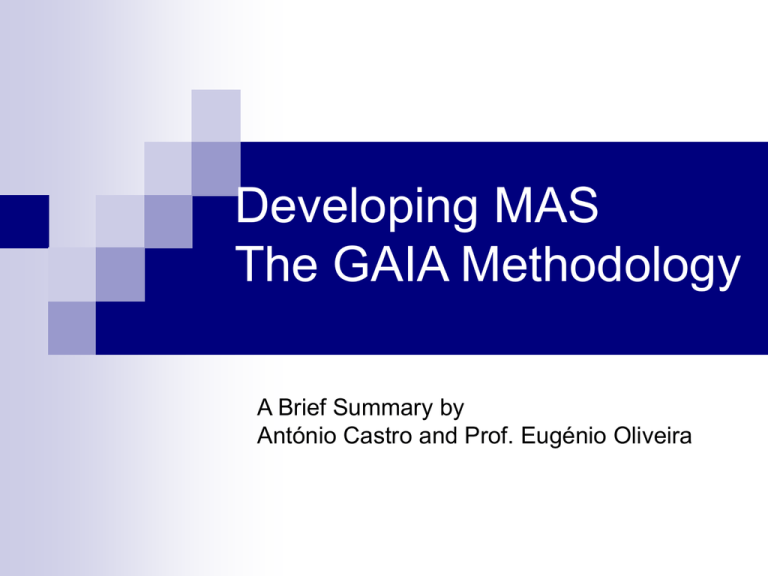
Developing MAS The GAIA Methodology A Brief Summary by António Castro and Prof. Eugénio Oliveira Outline GAIA Methodology Overview Analysis Phase Architectural Design Detailed Design Scopes and Limitations Full Cycle: Big Picture References 2005-09-09 Developing MAS: The Gaia Methodology, a brief summary 2 Overview of GAIA Methodology The goals of the organizations that constitute the overall system and their expected global behavior Separating, when possible, the organizational independent aspects (detected in analysis) from the organizational dependent ones (derived from the adoption of a specific organizational structure). Identifies the agent classes that will make up the system and the agent instances that will be instantiated from these classes. 2005-09-09 The rules that the organization should respect and enforce in its global behavior OUTPUT OUTPUT OUTPUT In terms of its topology and control regime. Can also exploit catalogues of organizational patterns. OUTPUT COMPLETION DEFINITION COMPLETION DEFINITION Developing MAS: The Gaia Methodology, a brief summary Identifies the main services – coherent blocks of activity in which agents will engage – that are required to realize the agent’s roles and properties. 3 Analysis Phase I Organizations: determine whether multiple organizations have to coexist in the system and become autonomous interacting MAS. Environmental Model: abstract computational resources, such as variables or tuples, made available to the agents for sensing (read), for effecting (change) or for consuming (extract) 2005-09-09 Developing MAS: The Gaia Methodology, a brief summary 4 Analysis Phase II Preliminary Role Model: identify the “basic skills” that are required by the organization to achieve its goals, as well as the basic interactions that are required for the exploitation of these skills. Preliminary Interaction Model: captures the dependencies and relationships between the various roles in the MAS organization, in terms of one protocol definition for each type of inter role interaction. 2005-09-09 Developing MAS: The Gaia Methodology, a brief summary 5 Analysis Phase III Organizational Preliminary Interactions Rules: responsibilities of the organization as a whole. These are safety (invariants that must be respected) and liveness (dynamics of the organization) organizational rules. 2005-09-09 Preliminary Roles Example of a Analysis Diagram Environment Model Developing MAS: The Gaia Methodology, a brief summary 6 Architectural Design I Including a detailed description of the semantics of the relations Organizational Structure: identify the appropriate organizational structure, including, topology and Graphical Representation control regime. Organizational Patterns: catalogue of possible modular and composable “organizational structures” that will help the designer. Formal Representation 2005-09-09 Developing MAS: The Gaia Methodology, a brief summary 7 Architectural Design II Role Model Completion of Role and Interaction Models: (1) define all the activities in which a role will be involved, (2) define organizational roles, (3) complete the definition of the protocols required by the application and (4) define organizational protocols. 2005-09-09 Developing MAS: The Gaia Methodology, a brief summary Interaction Model 8 Detailed Design I Agent Model: to define the agent model it is necessary to identify which agent classes are to be defined to play specific roles and how many instances of each class have to be instantiated in the actual system. The model can be defined using a simple diagram (or table) specifying, for each class, which roles will map it. In addition, the model can document the instances of a class that will appear in the MAS. Role Agent Class 2005-09-09 Developing MAS: The Gaia Methodology, a brief summary 9 Detailed Design II Services Model: identify the services associated with each agent class, or equivalently, with each of the roles to be played by the agent classes. For each service it is necessary to document its properties: inputs, outputs, preconditions and postconditions. The services are derived from the list of protocols, activities, responsibilities and liveness properties of the roles it implements. 2005-09-09 Developing MAS: The Gaia Methodology, a brief summary 10 Scopes and Limitations of GAIA Does not directly deal with particular modeling techniques. It proposes but does not commit to, specific techniques for modeling (e.g., roles, environment, interactions). In the future: “… AUML is a useful companion to GAIA.” Does not directly deal with implementation issues. The outcome is a detailed but technology-neutral specification. Should be easy to implement with, for example, a FIPA-compliant agent system. Does not explicitly deal with activities of requirements capturing and modeling. In the future: “… integrate methods and techniques from goaloriented analysis.” 2005-09-09 Developing MAS: The Gaia Methodology, a brief summary 11 Full Cycle Big Picture Requirements Analysis using methods and techniques from goal-oriented analysis (Castro et al. 2002, Mylopoulos et al. 1999) Analysis and Design with GAIA Methodology AUML as a notation. 2005-09-09 Developing MAS: The Gaia Methodology, a brief summary 12 References F. Zambonelli, N. Jennings, M. Wooldridge Developing MAS: The Gaia Methodology ACM Vol. 12, N. 3, July 2003. J. Castro, M. Kolp, J. Mylopoulos Towards requirements-driven information systems engineering: The tropos project Inf. System Vol. 27 N. 6, June 2002. J. Mylopoulos, L. Chung, E. Yu From object-oriented to goal-oriented requirements analysis ACM Vol. 42, N. 1, January 1999 J. Odell, H. Parunak, C. Bock Representing agent interaction protocols in UML Proc. 1st Int. Work. AOSE, Vol. 1957, 2001 B. Bauer, J. P. Muller, J. Odell Agent UML: A formalism for specifying multiagent software systems. Int. Journal Soft. Eng. Knowl. Eng. Vol. 11 N. 3, April 2001 2005-09-09 Developing MAS: The Gaia Methodology, a brief summary 13
